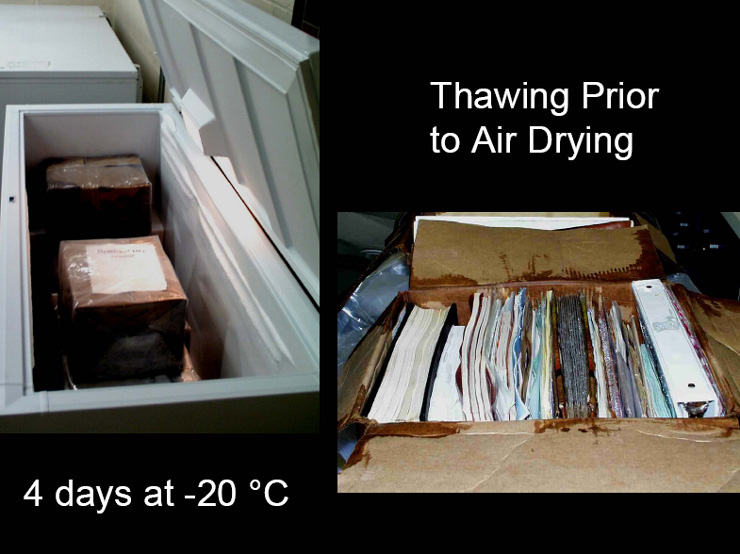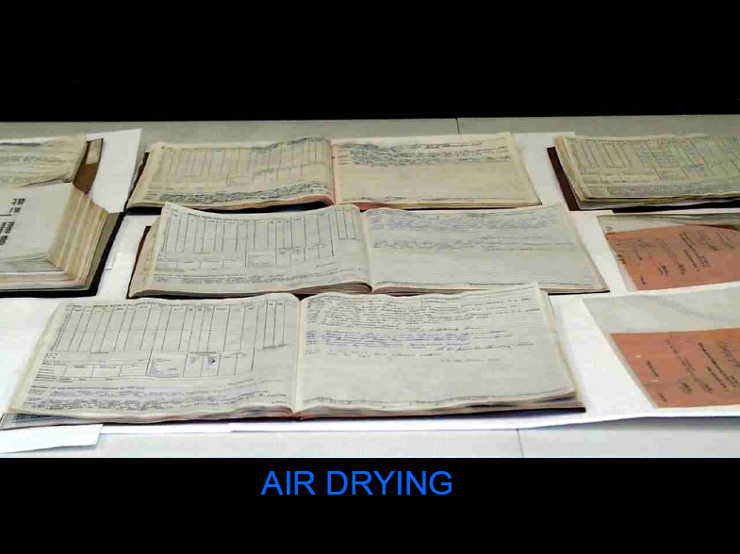
Comparison of Drying Methods
Freezing might be a necessary step following any large-scale disaster. Since air-drying can require vast surface areas not readily available, materials may be frozen and thawed in manageable amounts as drying space becomes available. It can, however, take up to 24 or more hours to completely thaw a frozen box at room temperature.
Air drying offers the security and privacy required for specific holdings. Items in need of special handling may be isolated--such as coated papers, parchment, or photographic materials. Air drying items in-house allows for direct monitoring of original order and intellectual control.
Air drying assumes that ample space and personnel are available for carrying out this labor intensive activity. Other drying methods may be preferable when the quantity of damaged materials is great and there is a lack of available space or personnel.
Attention was focussed on maintaining original order of the air-dried folders and their contents. Having the same individual unpack wet and re-assemble the same dried materials helps to maintain close control over original order.

